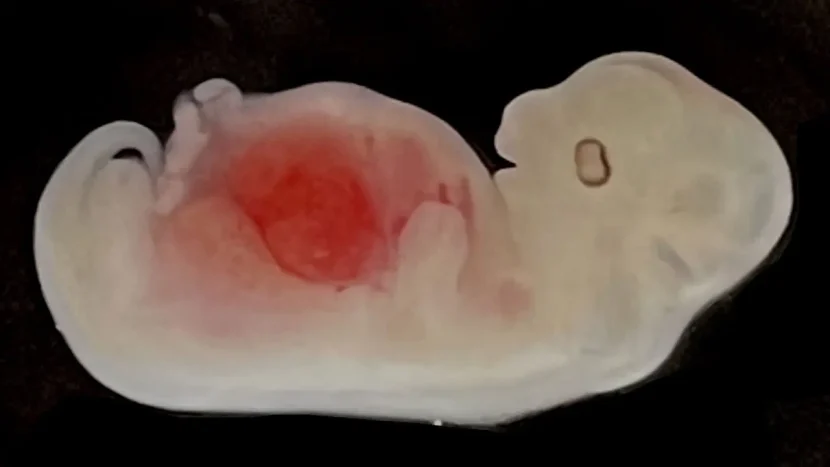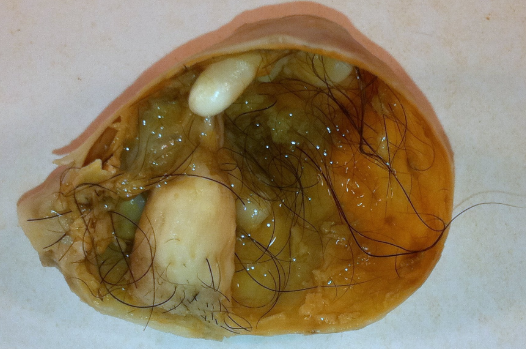Fetus in fetu represents one of the most extraordinary and rare congenital conditions documented in medical literature. This condition features a malformed parasitic twin that resides within the body of its host, typically discovered during infancy. German anatomist Johann Friedrich Meckel first described this anomaly in 1800, identifying it as a unique form of parasitic twin formation that differs from tumors or cystic growths.
Although its physical presentation may shock, the true intrigue stems from its embryological roots. To understand how this phenomenon occurs, we must explore the earliest stages of embryogenesis. During this phase, a slight deviation in normal twinning can cause one twin to envelop the other. This blog explores the fascinating developmental origins of fetus in fetu, explains how it forms, and clarifies how it differs from similar conditions like teratomas.
What Is Fetus in Fetu?
Fetus in fetu (FIF) represents a rare congenital anomaly where a malformed parasitic twin develops inside the body of its host twin. Physicians most commonly locate it in the abdomen, but they have also discovered it in regions like the skull, mediastinum, or scrotum. The parasitic twin develops to varying degrees and often forms distinguishable body structures such as limbs, digits, vertebrae, hair, and rudimentary organs.
One defining feature of fetus in fetu is the presence of a vertebral column, which allows clinicians to distinguish it from a teratoma — a tumor that may contain tissues like bone or hair but lacks any organized fetal structure. In some rare cases, the parasitic twin also develops a primitive brain or cranial structure, although it usually remains non-functional and poorly formed. Most cases do not involve a fully developed brain or nervous system.
The parasitic twin cannot survive independently. It lacks vital organs, including a functioning heart and placenta, and depends entirely on the host twin for blood supply. Since it stops growing early in development, it cannot survive outside the host’s body. Surgeons usually remove the nonviable enclosed fetus during a surgical procedure.
Doctors often detect FIF during infancy or early childhood when the host twin starts showing symptoms like abdominal swelling or pain. Although the condition occurs in only about 1 in 500,000 live births, it continues to fascinate both the medical community and scientific researchers.
How Does Fetus in Fetu Develop?
Fetus in fetu develops due to an abnormality in the early stages of embryogenesis, typically during a monozygotic (identical), diamniotic twin pregnancy. In a normal identical twin formation, a single fertilized egg splits into two embryos. However, in the case of fetus in fetu, this division is incomplete or asymmetrical, resulting in one twin becoming enveloped by the other during the blastocyst stage — usually before implantation in the uterus.
The enclosed twin, known as the parasitic twin, becomes trapped inside the body of the dominant or host twin. Because it lacks a functioning placenta and is entirely dependent on the host for blood supply, the parasitic twin’s development halts early, often around the time when basic body structures begin to form. Despite this arrested development, it may still possess vertebrae, limb buds, rudimentary organs, and other fetal features.
This internalized twin remains dormant and encapsulated, often undetected until it grows large enough to cause physical symptoms in the host, such as abdominal swelling or discomfort — typically during infancy or early childhood.
Importantly, fetus in fetu is distinguished from other conditions like teratomas by its organized anatomical structure, which suggests a developmental — rather than neoplastic — origin. This unique formation supports the theory that fetus in fetu is not a tumor, but rather the result of anomalous twin inclusion during embryonic development.
Key Developmental Timeline
- Day 0–14 (Fertilization to Early Cleavage Stage):
A single fertilized egg begins to divide and attempts to form identical twins. In the case of fetus in fetu, the splitting is incomplete or asymmetrical.
- Day 15–21 (Blastocyst Stage and Implantation):
One embryo begins to envelop the other, leading to internalization of the parasitic twin. The host twin continues normal development.
- Week 3–4 (Early Embryonic Development):
The parasitic twin shows early structural development, including primitive body axes and rudimentary organ formation. However, its growth is restricted due to lack of placental support.
- Week 8 onward:
The development of the parasitic twin ceases. It becomes encapsulated within the host, often in the retroperitoneal area. Despite arrested growth, it may retain identifiable features like vertebrae, limb buds, or hair.
- Postnatal Period (Infancy to Early Childhood):
The fetus in fetu may remain asymptomatic for some time but is typically discovered when it grows large enough to cause discomfort, swelling, or other complications in the host.
Final Thoughts
Fetus in fetu remains one of the most fascinating and rare developmental anomalies known in medical science. Though its appearance can be startling, it is not a medical mystery but rather a consequence of abnormal twinning during early embryogenesis. Understanding its embryological origin helps differentiate it from other conditions like teratomas and highlights the delicate complexities of human development.
While the parasitic twin is nonviable and poses no threat of independent survival, its presence can lead to physical complications in the host and usually requires surgical removal. As imaging and diagnostic technologies advance, the early detection and tr eatment of such rare anomalies continue to improve.
Ultimately, fetus in fetu serves as a compelling example of how developmental processes can deviate in extraordinary ways — offering a glimpse into both the fragility and resilience of human life before birth.




